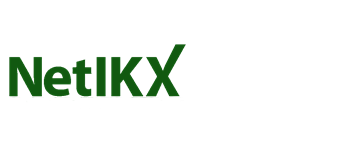Blog for March 2019 Seminar: Open Data
The speaker at the NetIKX seminar in March 2019 was David Penfold, a veteran of the world of electronic publishing who also participates in ISO committees on standards for graphics technology. He has been a lecturer at the University of the Arts London and currently teaches Information Management in a publishing context.
David’s talk looked at the two aspects of Open Data. The most important thing for us to recognise is Data as the foundation and validation of Information. He gave a series of interesting historical examples and pointed out that closer to the present day, quantum theory, relativity and much besides all developed because the data that people were measuring did not fit the predictions that earlier theoretical frameworks suggested. A principle of experimental science is that if the data from your experiments don’t fit the predictions of your theories, it is the theories which must be revisited and reformulated.
David talked about some classificatory approaches. He mentioned the idea of a triple, where you have an entity, plus a concept of property, plus a value. This three-element method of defining things is essential to the implementation of Linked Data. Unless you can stablish relationships between data elements, they remain meaningless, just bare words or numbers. A number of methods have been used to associate data elements with each other and with meaning. The Relational Database model is one. Spreadsheets are based on another model and the Standard Generalised Markup Language (and subsequently XML) was an approach to giving structure to textual materials. Finally, the Semantic Web and the Resource Description Framework have developed over the last two decades
Moving on to what it means for data to be Open. There are various misconceptions around this – it does not mean Open Access, a term used within the worlds of librarian ship and publishing to mean free-of-charge access, mainly to academic journals and books. We are also not talking about Open Archiving, which has a close relationship to the Open Access concept. Much of the effort in Open Archiving goes into developing standardised metadata so that archives can be shared. Open data is freely available. It is often from government but could be from other bodies and networks and even private companies.
We then watched a short piece of video showing Sir Nigel Shadbolt, in 2012, who was a founder of the Open Data Institute, which set up the open data portals for the UK government. He explains how government publication of open data, in the interests of transparency is not found in many countries and at national, regional and local level. The benefits include improved accountability, better public services, improvement in public participation, improved efficiency, creation of social value and innovation value to companies.
We heard about examples of Open Data, for example Network Rail publishes open data and benefits through improvements in customer satisfaction. It says that its open data generates technology related jobs around the rail sector and saves costs in information provision when their parties invest in building information apps based on that data. The data is used by commercial users too, but also the rail industry and Network Rail itself. The data can also be accessed by individuals and academia.
Ordnance Survey open data is important within the economy and in governance. David uses one application in his role as Chair of the Parish Council in his local village. The data allows them to see Historic England data for their area, and Environment Agency information showing sites of special scientific importance or areas of outstanding natural beauty.
After the tea-break, David showed three clips from a video of a presentation by Tim Berners-Lee. David then explained how the Semantic Web works. It is based on four concepts: a) metadata; b) structural relationships; d) tagging; d) the Resource Description Framework method of coding which in turn is based on XML.
The Open Data Institute has developed an ‘ethics canvas’, which we looked at to decide what we thought about it. It gives a list of fifteen issues which may be of ethical concern. We discussed this in our table groups and this was followed by a general discussion. There were plenty of examples raised from our collective experience, which made for a lively end to the seminar.
This is taken from a report by Conrad Taylor
To see the full report follow this link: Conradiator : NetIKX meeting report : Open Data


